
Topics
Twenty-seven people were arrested when riot police moved in after the funeral of Patrick Dorismond in Brooklyn on Saturday. The Reverend Al Sharpton is calling for an investigation into what happened. He says police may have fueled tensions by showing up in riot gear. Sharpton had led a procession of more than 3,000 mourners and protestors to a Catholic church for the funeral. The activist is also calling for the Justice Department to place the NYPD under the supervision of a federal monitor. [includes rush transcript]
Meanwhile, soon after the protest, Rudolph Giuliani released a statement praising the NYPD, saying the police “should receive the thanks of the entire city” for showing restraint in the face of “sustained hostility.” The mayor also said marchers bear the blame for the violence.
Tape:
- Errol Maitland, Democracy Now Technical Director, as he was beaten and arrested by New York Police at Patrick Dorismond funeral protest on Saturday. He is now in a hospital coronary care unit under police guard. Call 72nd Precinct: 718.965.6311.
Guests:
- King Downing, attorney who was present at the funeral.
- Michael Tarif Warren, attorney who is representing some of the arrested protestors.
- Ray Laforest, Haitian American community activist. Call Haitian Information Center: 718.284.0889.
- Michael Letwin, Association of Legal Aid Attorneys.
Related link:
Transcript
AMY GOODMAN: At least twenty-seven civilians were arrested during the protests against the New York City police. They’ve been arraigned. Most were released on their own recognizance in New York. They were arrested after the funeral in Brooklyn for Patrick Dorismond, an unarmed black man who was shot to death by an undercover officer.
Meanwhile, Mayor Rudolph Giuliani and the Reverend Al Sharpton are on opposite sides again. The mayor says marchers bear the blame for the violence. He’s also blasting those who suggested that the riot gear-wearing police provoked the crowd. Sharpton is calling for an investigation. He also wants the Justice Department to place the NYPD under the supervision of a federal monitor.
We’re going to begin today’s coverage of what happened this past weekend in Brooklyn with an early report from Errol Maitland. Pacifica station WBAI was out en-masse on Saturday covering the events — the thousands of people — some estimate over 10,000 people were out for the funeral that took place at the Holy Cross Catholic Church in Brooklyn for Patrick Dorismond.
Errol, at the beginning of the events, just after the funeral, was giving this report.
ERROL MAITLAND: [inaudible] where a woman was hit by the police, by three police officers, who attacked at the corner of Church and Rogers. And the people used the Haitian flag as a gurney to pull out down to Erasmus and — from Church Avenue and Rogers to Erasmus and Rogers so she could get medical treatment. She laid on the ground, they said, for well over four to five minutes at least a half an hour after they called 911 for an ambulance. The fire department finally showed up and started to administer first-aid treatment. Ambulances got here from Lutheran Medical Center and she has been placed in an ambulance.
We are only a few blocks away from Kings County Hospital — it is the nearest municipal hospital — and I am surprised that one of the city — New York Police Department’s EMTs did not come.
UNIDENTIFIED WOMAN: She had to be taken to the ambulance. The ambulance is not coming to her.
AMY GOODMAN: Democracy Now! technical director Errol Maitland, a producer at Pacifica station WBAI, as well, out on the street on Saturday describing the scene just after the funeral.
Then, a few minutes later, things started to get more heated in the street.
ERROL MAITLAND: The police are surrounding this woman, and they are beating her down to the ground. And she’s down on the ground, and they are pushing me — and one of the crowd captain is yelling, “Stop! Stop!” And he is — and he’s telling one of these officers not to push him, as you can hear, because they are getting ready to break out here on the crowd.
Yeah. So this woman is down on ground, and they are yelling disperse, while she’s down on the ground.
NYPD: Leave the area! Leave the area!
ERROL MAITLAND: [inaudible] pushed by the police from the 80th Precinct — [inaudible]
NYPD: Leave the area! Leave the area!
ERROL MAITLAND: —- so this is the situation -—
NYPD: Leave the area! Leave the area!
ERROL MAITLAND: — [inaudible]
NYPD: Leave the area, please! Leave the area! We need to restore order! Please leave the area! We need to restore order!
ERROL MAITLAND: Only person out here who’s disorderly is the police department.
NYPD: Please leave the area!
ERROL MAITLAND: Captain [inaudible], could you give us a statement as to what’s going on out here?
NYPD: [inaudible] 3:00 p.m. Leave the area or you will be subject to arrest!
ERROL MAITLAND: Well, we are in —
NYPD: Leave the area or you will be subject to arrest!
ERROL MAITLAND: —- you are live on BAI, Deputy Inspector. And I’ve been pushed by a police officer into the crowd, and he said take it. And he just told them to f** me up. I’ve been told by the police to f** me up, and I’m down on the ground. Everybody’s trying to grab my cell phone and my [inaudible] -—
They’re now on my back. I am still broadcasting because this is how the police department in New York —
AMY GOODMAN: Errol Maitland, Democracy Now! technical director, beaten and arrested by police, now in the Kings County Hospital coronary care unit under police guard. At least twenty-seven other people were arrested during the funeral of Patrick Dorismond, who was killed earlier by New York City Police.
We’re going to go now to Michael Tarif Warren, who is a well-known attorney in New York, who is representing Errol Maitland and a number of the other people who were involved in the procession after the funeral and what ensued.
Welcome to Democracy Now!
MICHAEL TARIF WARREN: My pleasure, Amy.
AMY GOODMAN: Well, can you lay out for us what has happened so far? Errol in serious condition. I visited him on Saturday night at Kings County Hospital in the emergency room. He was — it was — it seemed like he was drugged up at that point, could hardly lift his head. He was on monitors and I.V. The police guard would not let me go near him. I asked why it was, what he was charged with. They said they didn’t know. I understood it was disorderly conduct. I said, “Why would this prevent people from visiting Errol and being with him?” because we all know that in hospitals people need advocates. And he said that I would just have to get away. Other people, his family, were able to see him yesterday in the coronary care unit. Can you explain what’s happening?
MICHAEL TARIF WARREN: Yes. Errol is still technically under arrest. He’s being charged with disorderly conduct. It’s not a crime, such as a misdemeanor or felony, but is, in fact, comparable to a violation. In fact, it is a violation.
The only reason a police guard is posted on his room is simply because he has not been processed in the criminal justice system. He has not been fingerprinted. He has not been arraigned and ultimately appear before a judge. So, technically, the police have the right legally to place a guard, as they have, outside his room.
However, in a case like this, where not only Errol, but a large segment of those individuals who were arrested, were charged with simple offenses, such as misdemeanor — low-level misdemeanor — in many instances, violations such as disorderly conduct, the normal practice is to issue what is called a desk appearance ticket, which would enable that person to be released and to appear in court on a later date. Had a desk appearance ticket been issued, as far as Errol’s case is concerned, there would be no necessity for the placing of a police guard outside his room, and he would be free of that type of restraint.
The fact that this case is a political case and is controlled by the titular head of the New York City Police Department, Rudolph Giuliani, and his surrogate, Commissioner Safir, that give rise to the punitive action that has been taken against not only Errol, but all the individuals who were arrested and who were held over twenty-four hours before they were arraigned.
AMY GOODMAN: I also want to make a comment. The foul language that you heard in the report — our listeners heard — as a news report, Errol was saying that he heard the police saying, “(Blank) him up! (Blank) him up!” And we felt this was very important, just as he was actually broadcasting over Pacifica station WBAI on a cell phone, that this was the scene and this is what was happening.
Now, as you point out, this is in the context of the overall picture of a very heated day on Saturday, a very painful day, as thousands came out to honor Patrick Dorismond, to be there for his funeral at the Holy Cross Catholic Church in Brooklyn on Church Avenue.
We are joined also on the telephone by another attorney, Michael Letwin, who is president of the Association of Legal Aid Attorneys. And in the studio, we’re joined by King Downing, who is also an attorney. Both were being legal observers out there on Saturday. King Downing, you had the advantage also in having a tape recorder, and we are going to listen to just what the progression of events were, how the situation got heated. But maybe you can first really situate this tape for us.
KING DOWNING: Well, what you’re going to hear is a tape of some of the incidents that took place early on, at the point where the march had left the funeral home and was beginning to approach Church Avenue on Flatbush Avenue. And at that time, Mark Stier and myself, who were acting as legal attorneys at that corner, had a conversation with one of the sergeants there, who had put barricades on all the corners and was telling people there that they would not be allowed to join march, and if they had wished to join the march, they should have gone back or should, at that point in time, walk back to the funeral home, which was over two miles away. And we pointed out to the sergeant that the fact that this was a procedure that they were going to try to carry out. along with the fact that the side of Church Avenue upon which the church rested was being barricaded away from the marchers, we felt that there was very seriously a potential conflict there.
AMY GOODMAN: And these were the marchers who were following the hearse, the whole funeral procession.
KING DOWNING: Yes. Yes. This —
AMY GOODMAN: It would be prevented from going to the church.
KING DOWNING: Would be prevented from going to the church on the side of the street.
AMY GOODMAN: Well, this is what the scene sounded like on Saturday:
KING DOWNING: Policeman giving — a community policeman giving instructions in French. The crowd is not listening. They’re pushing their way in, whichever way they want to go, pushing up against the barricades on the outside. A lot of pushing and shoving up against the barricades.
You hear them. They’re raising their fists at the community officers. They’re pushing up against them, chanting ”KKK, NYPD,” and they’re pushing against the barricades to get on the side of the — to get on the same side of Church Street as the church. They blocked the whole zone off in front of the church, and they’re not letting them march on that side.
The crowd has stopped there, and they’re refusing to move forward. They’re being told they’re going to have to walk on the opposite side of Church Street that is on the other side of the street from the church, and they’re not standing for it. They are pushing up against the barricades. The whole crowd is there, chanting, leaning against the fence.
Just got my first sight of the coffin, surrounded by a CB. But I can just see the top of it with flowers all over it.
AMY GOODMAN: You’re listening to Pacifica Radio’s Democracy Now!, as we break for a minute, and then we’ll come back and look at how the temperature rose so much after the funeral that then the riot police moved in, something that Reverend Al Sharpton had — and speaking with the police — had said should not happen at any — for any reason, because it would definitely anger the crowd. And we’ll talk about how this kind of situation explodes into one where so many people are arrested. And, again, calls for a federal investigation of the New York Police.
You’re listening to Pacifica Radio’s Democracy Now! We’ll be back in a minute.
[break]
AMY GOODMAN: You are listening to Pacifica Radio’s Democracy Now!, the Exception to the Rulers. I’m Amy Goodman.
ERROL MAITLAND: You are live on BAI, Deputy Inspector. And I’ve been pushed by a police officer into the crowd, and he said take it. And he just told them to f** me up. I’ve been told by the police to f** me up
AMY GOODMAN: Errol Maitland as he’s saying that the police said to “(Blank) him up! (Blank) him up!” and then he is down on the ground continuing to hold that cell phone.
Michael Tarif Warren, attorney for Errol Maitland, as well as the other protesters, some of them who were arrested. Again, Errol Maitland is our technical director. You don’t hear him often on Democracy Now!, but you do hear his wizardry as he runs the program.
What about the significance of arresting Errol Maitland, who was clearly identifying himself? They knew well who he was as he was holding the phone.
MICHAEL TARIF WARREN: Amy, I think that it’s quite critical, because this is the first time that I can ever remember that a [inaudible] was simply reporting the truth has been viciously attacked in the most unwarranted fashion, as individuals of color are attacked in this city on a routine basis by the New York City Police Department.
And what is also critical and significant is that you have a graphic description of the attack given by the victim himself, describing how it took place, describing how orders were given from a superior officer to other officers to attack him and resulting in the significant injuries that he sustained.
So you have a vivid illustration of what occurred to him, how it occurred, who gave the order, and all of this is quite significant. And I think that people must come behind and support Errol, because Errol represents an individual of an institution that is attempting to portray the truth about not only how the police operate, but about how police brutality is carried out in this community on a regular basis. And if a journalist can be attacked, such as Errol, who is a respected producer and journalist in this community, then no one is safe. And I wanted to make that point quite clearly.
AMY GOODMAN: Will the police guard be taken off today? They’ve clearly isolated him so that he cannot speak to the press or anybody, as he is in the coronary care unit under police guard.
MICHAEL TARIF WARREN: Well, I’m going to make an attempt to contact the Deputy District Attorney John O’Mara, who led the prosecution team, initially, at the precinct on Saturday night in an effort to effectuate a bedside arraignment, and hopefully we will have a bedside arraignment at some point today, as soon as I can free myself from another case that I’m involved in in court. And if we have a bedside arraignment, then he will be arraigned, and there will be no longer the necessity for having that guard placed outside his room.
I just want to say one thing further very quickly, that at the precinct, we attempted to secure desk appearance tickets for many of the individuals who were being charged, simply because that would allow them to be released on the spot and come to court on a later date. The prosecutor said that call had to be made by the police department. He could not make that call, even though he may have suggested that take place, that the buck stopped with the police department, and they ultimately made that decision. And I think that’s a classic illustration of why, in these cases, because of the symbiotic relationship that exists between the police and district attorneys, that you can’t have a prosecution with any semblance of integrity if the district attorney is prosecuting a case against a police officer. And I think that the Diallo case is a classic example of that.
AMY GOODMAN: Well, I want to thank you very much for being with us, Attorney Michael Tarif Warren. I know you have to head off to court right now.
There has been a poll taken by New York One and the Sunday New York Daily News. Clearly, New Yorkers are saying that the three deadly shootings that have taken place in the last thirteen months — that’s Amadou Diallo, then Malcolm Ferguson, who, by the way, was arrested at the protests of the verdict in the Amadou Diallo case, in which four police officers gunned down this Guinean immigrant — Malcolm Ferguson, killed a few days after the verdict by New York police — and then Patrick Dorismond. The poll says that close to three-quarters, 72%, of New Yorkers say the use of deadly force by police is out of hand.
When it comes to the Mayor’s decision to release Dorismond’s juvenile criminal arrest record — this was a record that was sealed when he was thirteen years old — and after Dorismond was killed two weeks ago, approached by undercover police officers — he was a security guard who had gone off work, had just come out of a bar with a friend, and they asked him for drugs. He said he didn’t know where they could get drugs. After the police shot him dead, Giuliani released sealed records of Dorismond, when he was thirteen years old. Two-thirds of New Yorkers say Giuliani was not justified in unsealing those records. And almost half of New Yorkers are calling for the police commissioner to leave.
We’re joined right now, as I was saying before, by King Downing, who was in the streets, who is an attorney from New Jersey who was observing events in New York and also recording them, as well as Michael Letwin, who is president of the Association of Legal Aid Attorneys, who was also out in charge of the legal observers of Saturday. We welcome you both to Democracy Now!
Michael Letwin, we heard King Downing describing the various kinds of barricades that were up, which were angering people. Can you describe your conversations with police?
MICHAEL LETWIN: Similar experience to what King described. I was marching along with the procession down Flatbush Avenue from the funeral home, together with Leslie Brody, who is the head of the National Lawyers Guild in New York City, Norman Siegel of the NYCLU, and, at various times, other lawyers, and also with Karen Pomer and Mimi Rosenberg, both from Pacifica.
And it was clear from the beginning of the march, as King described, that the police were out to provoke something to happen, because large numbers of officers, mainly wearing these community affairs jackets, walked amidst the marchers, despite repeated requests by us and by the organizers of the march, that they withdraw. And they simply wouldn’t. And I remember looking around, all of us at each other, and saying, “Well, what do they think they’re doing?” because it was clearly irritating the situation and raising the level of hostility towards the police.
And the march kept getting bigger. As we approached Church Avenue, it was exactly as King described. We could see the street had been blocked off in large part by the metal barricades on Church Avenue in front of the church. I approached the chief at the scene and said to him, you know, “Would you remove these, please? People can’t get through, and you’re just making the situation worse.” He refused. And within about a minute, as King described, the marchers simply overwhelmed the police, pushed their way through and moved through the barricades onto the street. And the police, at that point, had to pull back.
And then, during the funeral service, the police attempted, I guess, to reassert their power in the situation. The crowd grew much larger. There were between five and ten thousand people, and everyone, of course, was very angry, to begin with, about the shooting of Patrick Dorismond and were increasingly offended that the police were pinning them into a very small space, and particularly when police officers were appearing in riot gear. And some scuffles broke out, as the police attempted to push people. And I, at that point, asked several officers, including a second chief who was at the scene and who apparently was the commanding officer, I asked him to withdraw and to allow the mourners to protest peacefully and to leave peacefully. And the chief refused to talk to me. He said, “I can’t talk to you,” and at that point called in even larger numbers of police with helmets and shields. And those police moved into the crowd and, as described earlier, beat and/or arrested numerous of the mourners.
We saw a young girl on the ground on Veronica Place, which [inaudible] where the police were all assembled and they had blocked off. This girl must have been about fourteen or fifteen. She was crying. She had been beaten on the ground. We saw another woman that I think was mentioned earlier by Errol Maitland, who was on the ground, having been beaten. And, of course, one of the people who was arrested and put through the criminal justice system, charged presumably with disorderly conduct, was a sixteen-year-old pregnant girl.
So that was the scene, and I think it’s the same thing that you’re hearing from a number of different directions. I guess the point that was so clear to me is that, although the police were out of control, there was nothing inadvertent about it. They were clearly following orders. Those orders, they made fairly clear, were coming from City Hall, as do all decisions regarding the police department in New York City. And it was another search-and-destroy mission to reassert the police’s unilateral power over people in communities of color, in particular. And so, they managed to escalate a situation that shouldn’t have occurred at all into violence. And it was the same dynamic that occurred, of course, when Amadou Diallo was killed and when Ferguson was killed and when Dorismond was killed. It was just another expression of that same thing.
And it also, of course, led to the arrest and the beating not only of Errol Maitland, but we’ve had a situation in recent weeks around demonstrations, including one last weekend — that is the weekend before this — when there was a protest on Saturday, a week before this Saturday, where — around Patrick Dorismond — where a number of people were arrested, including one of our Legal Aid attorneys, who was there as a legal observer, Antonia Codling, who also, like everybody else, was put through the system. So we are seeing that there is a conscious attempt by the police to provoke and escalate conflict. And it is true that that then spills over to affecting not only people who are the traditional targets, but also to journalists and lawyers and everyone else.
AMY GOODMAN: Michael Letwin is the president of the Association of Legal Aid Attorneys who was at the funeral of Patrick Dorismond on Saturday. Again, Mayor Giuliani is calling the protest an orchestrated attack on the police; the Reverend Al Sharpton calling for an investigation into what happened and to figure out if the police or the people started the violence.
The New York City public advocate Mark Green is calling for the resignation of the police commissioner, due to “growing rift between the police and minority communities.” And the Bronx borough president, Fernando Ferrer, as well as the New York state controller, have asked Governor George Pataki, the governor of New York, to launch a state investigation into what Ferrer is calling a crisis of confidence that currently exists between the community and the police department.
King Downing, the Mayor’s words, “an orchestrated attack on the police,” and he said the people of New York should thank the police for what they did on Saturday.
KING DOWNING: How do you respond to that? I think what we actually had was orchestrated attack on the people. And many of the mourners who were there were quite aware of the history of what had occurred at the Million Youth March, where people had spent a day peacefully, despite the fact that they were barricaded in at every front and were not allowed to move freely through the crowd. And they clearly saw the same situation again when they confronted the barricades.
There was no reason for the last incident to have taken place, the final “riot,” because the whole incident took place over whether the crowd would be allowed to move around to the side of the church and accompany the casket out the same way they had accompanied the cars and the casket in.
And I was six feet away from the hearse when it pulled up, and a young man fell against the hearse crying, in tears. His friends had to carry him away. People were touching the coffin and touching the hearse. And it was very important for them to make that contact at the end. And for them to be denied that access when the people in the procession left through the side door, to have the police block that area off, just added to the confrontation that had taken place before.
AMY GOODMAN: We’re also joined on the telephone by Ray Laforest, who is a Haitian community — Haitian American community activist in New York, was at the funeral on Saturday. The temperature, to say the least, is growing in the Haitian community, which has been very politically active in the past. Again, it was not only, of course, Patrick Dorismond who was killed by undercover New York City police officers, but Abner Louima, several years ago brutalized by New York City police also, another Haitian American.
Ray Laforest, can you talk about Patrick Dorismond in the Haitian community, where he comes from, who is father is, and what the Haitian community’s response has been?
RAY LAFOREST: Well, Patrick grew up here and was baptized at the church where he was buried. His father, Andre, was a very well-known Haitian musician, and a co-founder, you could say, of the dominant popular rhythm in Haiti, which is called [inaudible], and the family is very well liked. I’m going to say these are not people who are really involved in politics on a current basis and have repeatedly called for things to be handled in a very quiet fashion.
However, as was pointed out earlier, the police have killed, within the last thirteen months, four unarmed black men —-[inaudible] Amadou Diallo and Ferguson and Patrick Dorismond. Within the last three or four months, three people -— unarmed people — were killed quite arbitrarily. And the community is really frustrated about this.
But we also should say that this combined with a lot of petty harassment that taxi drivers are suffering every day, being insulted about their accent, about their color, being told to go back home, and, in some cases, being roughed up and humiliated and being told to shut up.
AMY GOODMAN: How is the Haitian community organizing right now? When I was out at the funeral on Saturday, at times before the funeral, I felt like I was back in Haiti during the coup period, as people were extremely afraid, but also angry at the authorities and the police presence. Lots of Haitian flags were out. In fact, there were flyers being given out that pointed out that Mayor Giuliani, when he was number three man in the Justice Department under Ronald Reagan, was saying that people were not fleeing from political persecution in Haiti. This was under the Duvaliers.
RAY LAFOREST: That’s correct. That was under Baby Doc, and he certified that there was no dictatorship in Haiti, and therefore the Haitians are to be returned, which we know was completely erroneous. It was a plain lie, a bold lie, and the Haitians are very much aware of it.
And as New Yorkers here, we have the Mayor’s arrogance and his high-handed attitude in dealing with people. And the frustration, as I said, is rising. We heard slogans, one of them [inaudible], which means to just yank something out from their roots. That was used in Haiti, being used here again, in referring to the mayor and his chief henchman, the police commissioner. And we are organizing very seriously. A committee called the Haitian Coalition for Justice was created, which organized a meeting — well, then they organized events and protests on Friday outside of the funeral parlor. And when the crowd reached a certain level in number, spontaneously just moved forward and occupied the space in the street in front of the funeral parlor. And this is the level of frustration and anger and determination to put an end to this kind of abuse.
So we’re reaching out to the Haitian community to create structures that would allow us to determine very clearly what has to be done to put an end to this, ally ourselves with other communities which themselves have been suffering from similar or worse abuses [inaudible] Haitian community really came here in numbers, and I’m referring particularly to the African American community here and the Latino community.
And yesterday we had a meeting that was attended — I should say that we’re feeling the wrath of the police. We were supposed to use a church that we’ve used in many instances, and we were called two nights — the night before, on Saturday evening, around 10:30 — they called us to tell us that they had picked out our flyers, they had seen that we had called for large meeting, and decided that the space they had available was too small. Of course, that was nonsense. We had met there many times. When we insisted on a true answer, we were told that the Archdiocese had called them and told them that this meeting could not take place.
So we talked to other people. We met in the African American community and, in spite of the change of venue and the difficulty we had in announcing it, we had more than 300 people. We’re strongly building links with other communities, and we intend to be part of a strong presence on the 5th of April in New York City, where the people —
AMY GOODMAN: —- are planning a major protest, forty-one days after the verdict in the Amadou Diallo case. Again, -—
RAY LAFOREST: Exactly.
AMY GOODMAN: — that forty-one days being symbolic, because of the forty-one bullets that were shot at Amadou Diallo by New York City police officers.
Also raised out there on Saturday, the US training of Haitian police and irony of that, as we see what the New York police are doing right now.
I want to thank you, Ray Lagorest, for being with us. I also want to thank Michael Letwin of the Association of Legal Aid Attorneys and King Downing, as we go out with some of the sounds of the protest on Saturday.
You are listening to Pacifica Radio’s Democracy Now! And then, up next, we will be talking about the elections in Russia.
[break]
AMY GOODMAN: The sounds of street, which sound like the streets of Port-au-Prince, on Saturday in Brooklyn, New York.
And one last point before we go to our break. Valerie Van Isler, the General Manager of WBAI radio, went to see Errol Maitland on Saturday night, was not able to get to him because of the police guard. She says that the 80th Precinct has refused her letter of access to Errol Maitland, a reporter here at WBAI and technical director of Democracy Now!
When I tried to talk to him, they said he was under police guard. I could only do so with permission, and you see what the 80th Precinct is doing. In effect, aside from Errol’s immediate family, he is being held incommunicado.
You are listening to Pacifica Radio’s Democracy Now! On Saturday night, as I saw Errol laying out on the gurney in the emergency room with the police telling me to get away from him, with IVs in his arm and being monitored, I could only think about Mayor Giuliani’s words, saying that the people of New York should thank the police for what they’d done at Patrick Dorismond’s funeral.
Stay with us.
[break]
AMY GOODMAN: You are listening to Pacifica Radio’s Democracy Now! I’m Amy Goodman. A slight correction: It was the 72nd Precinct that said that the general manger of Pacifica station WBAI could not see Errol Maitland in the coronary care unit, and, again, he remains under police guard, and we are not able to speak with him.
[…] A lot of people calling in asking about why Errol Maitland is being held incommunicado, our technical director at Democracy Now! being held under police guard in the coronary care unit at Kings County. You can call the 72nd Precinct and ask them in Brooklyn. This is the phone number: (718) 965-6311. (718) 965-6311. Errol Maitland, one of twenty-seven people who were arrested on Saturday after the funeral of Patrick Dorismond.

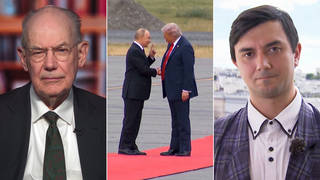
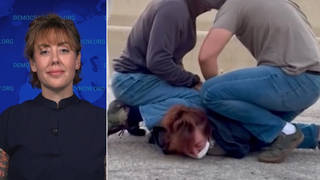

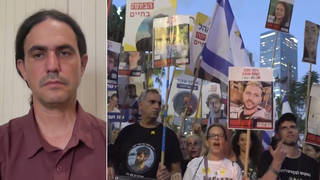

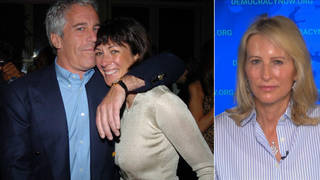
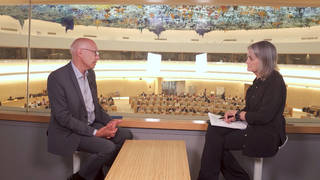
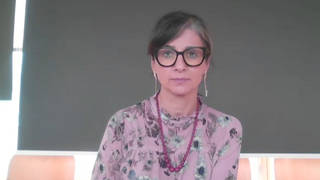

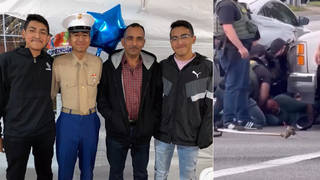
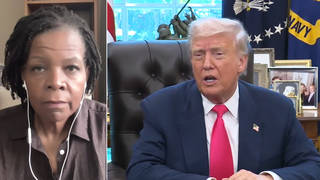
Media Options